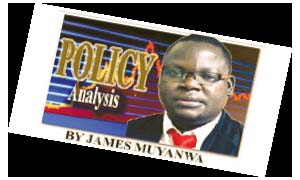ONE issue, which experts say has been impeding private investments in the electricity sub-sector in Zambia, is the past Zesco monopoly of the power infrastructure, particularly the transmission and distribution networks. Lack of open access to the networks has seemingly been a major challenge for potential Independent Power Producers to venture into this subsector. Today, we feature a legal expert who looks at the past, present and future landscape of this important subsector. JAMES KALOKONI writes that:
The electricity sub-sector can be organised into two models- the State Monopoly Model on the one hand and the Liberalised Model on the other.
In a state monopoly model, the State is the sole player in the electricity sector – the State solely generates, transmits, distributes and supplies power to all its citizens without discrimination and any participation by private investors is usually criminalised.
After the end of the Second World War, the electricity industry was run as a State Monopoly because the then dominant ideology was that electricity was a social good that needed to be provided for free to every citizen.
Nevertheless, the State Monopoly Model was associated with inefficiencies, lack of capitalisation which resulted in power blackouts due to dilapidated infrastructure and was, therefore, abandoned by governments around the world in the early 1990s.
On the other hand, in a liberalised model, the state monopoly is abolished and instead, competition between private entities is introduced as well as customer choice.
On the reasons why Governments liberalise the energy sector such as the electricity sub-sector, it must be noted that the electricity world is divided into two categories.
The first category countries which comprise the developed world, liberalise their electricity industries to promote competition, efficiency and low electricity prices. On the other hand, category two comprises the developing world, with countries such as Zambia. These countries liberalise their electricity industries to attract private energy investments to the electricity industry. In 1995, Zambia took the gigantic step of liberalising the electricity industry by repealing the then Zambia Electricity Supply Act Cap 813 of the Laws of Zambia which had entrenched Zesco’s monopoly in the electricity sub-sector. Parliament enacted two landmark pieces of legislation to open up the electricity sub-sector to competition.
The new Electricity Act and the Energy Regulation Act which created the regulator – the Energy Regulation Board (ERB) to, among others, level the playing field in the energy sector.
However, the repeal of the old electricity Act which entrenched State monopoly did not introduce real competition in Zambia because it simply transformed Zesco into a private monopoly because the company still continued being the sole owner of the transmission network. To compete effectively, the prospective energy investors needed access to the existing Zesco’s transmission and distribution network.
This is for them to transmit, distribute and supply power to their customers who might be dotted around the country.
Without access to this network, the private energy investors would be stuck with their electricity and the only option available to them would be to sell power to the Government.
This is by signing Power Purchase Agreements (PPAs) with the power utility. Put conversely, in a bundled power market, that is a power market in which the four segments of the electricity value chain are under one umbrella which is a public utility, the power market is based on a Single Buyer Model in which the only buyer of electricity is the power utility itself.
The power utility signs PPAs with all the private energy investors guaranteed by the Government by means of sovereign guarantees.
By granting sovereign guarantees to investors, the Government undertakes to step into the shoes of the power utility should it go into insolvency or fail to honour its financial obligations under the signed PPAs. This is a huge burden on the citizens.
From the energy law perspective, the implication of signing the PPAs between the power utility and private energy investors is that there is no existing power market where these investors can sell their power to mitigate their business risks such as the volume and market risks.
In the then bundled power market in Zambia, there was no law which compelled the power utility to grant private energy investors access to its transmission and distribution network.
Before the enactment of the current law on open access, Zesco was the sole owner of the network and still continues to be, to some extent, and in law, the concept of ownership implies a bundle of rights.
These include the right to exclude or deny competitors access to its network, the right to charge exorbitant fees for using its network or simply grant access to its network on discriminatory terms.
In competition law, Zesco’s transmission network is an essential facility, meaning a facility without access to which other competitors can literally not compete on the liberalised electricity market and this prevents competition.
Therefore, the only policy option available to the Government has been to unbundle the power utility.
From the onset, it is vital to note that unbundling the power utility does not mean selling it.
Look out for next week’s article on the meaning of unbundling Zesco!
Mr Kalokoni is an Advocate of the Superior Courts of Zambia with more than 27 years of experience in civil litigation, specialising in employment, energy and natural resources law and holds a Master of Laws Degree in Energy Law and Policy from the Centre for Energy Petroleum and Mineral Law and Policy, Dundee University, Scotland.
For comments: +260977246099, +2600955431442 or jmuyanwa2021@ gmail.com or contact Author (directly) on +260977708045 or jckalokoni@gmail. com.







